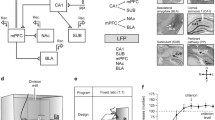Abstract
The activity of the pedunculopontine tegmental nucleus (PPTg) neurons was recorded in three unrestrained cats operantly conditioned to perform a lever-release movement. The movement had to be initiated either rapidly after a (click) stimulus in a simple reaction-time paradigm or had to be delayed after the same stimulus in trials identified by a tone cue. Successful trials were rewarded by a food pellet. A total of 107 neurons were recorded with microelectrodes. Brief spike neurons (mean duration: 0.7 ms) and broad spike neurons (mean duration: 2 ms) presumed to be cholinergic were detected. Of the 73 neurons localized in the PPTg area, 53 had brief spikes and 20 broad spikes. Changes in activity most commonly occurred very early after the stimulus or during the reinforcement process. Most neurons with brief spikes exhibited very early excitation after the stimulus and reinforcement-related activity. These neurons had a mean activity of 23.7 impulses/s in the period preceding the stimulus. The onset of activation after the stimulus had a latency of 8.6±6.9 ms (mean±SD), with a range of 4–35 ms. In trials where the movement had to be delayed after the stimulus, the early activation disappeared or was considerably reduced, showing that it was context-dependent. A small proportion of neurons with brief spikes initially decreased activity after the stimulus, but with a latency >9 ms. All the neurons with broad spikes, except one, had reinforcement-related activity. Half of them showed exclusively reinforcement-related activity, the other half also early activation after the stimulus. These neurons were about half as active in the period preceding the stimulus occurrence than the neurons with brief spikes. The early context-dependent activation is discussed in relation to the excitatory projection of PPTg neurons on the subthalamic nucleus. The reinforcement-related activity, preferentially evidenced in broad spike neurons presumed to be cholinergic, is speculated to be associated with cholinergic projection of PPTg neurons to the dopaminergic neurons of the substantia nigra. Finally, the role of PPTg in the ongoing control of motor performance and reinforcement processes is discussed in relation to the basal ganglia circuitry.
Similar content being viewed by others

Author information
Authors and Affiliations
Additional information
Received: 14 July 1997 / Accepted: 3 March 1998
Rights and permissions
About this article
Cite this article
Dormont, J., Condé, H. & Farin, D. The role of the pedunculopontine tegmental nucleus in relation to conditioned motor performance in the cat I. Context-dependent and reinforcement-related single unit activity. Exp Brain Res 121, 401–410 (1998). https://doi.org/10.1007/s002210050474
Issue Date:
DOI: https://doi.org/10.1007/s002210050474


